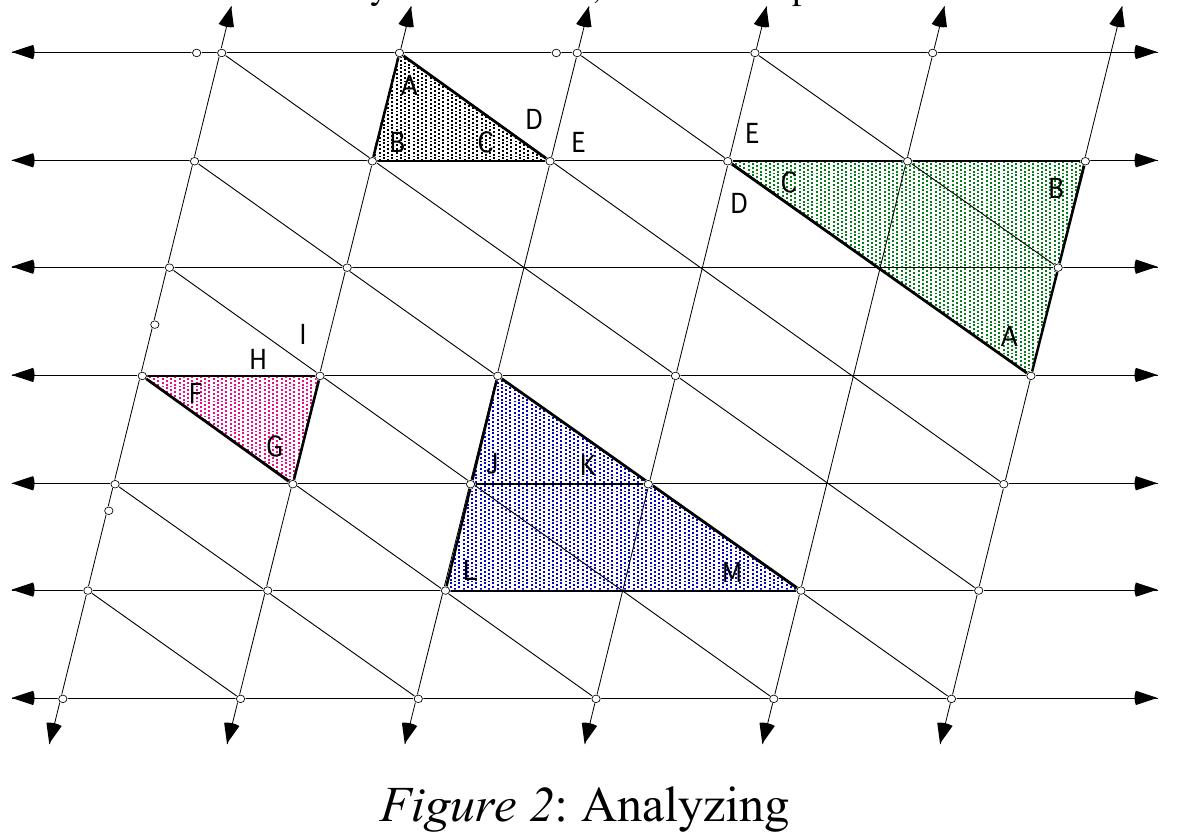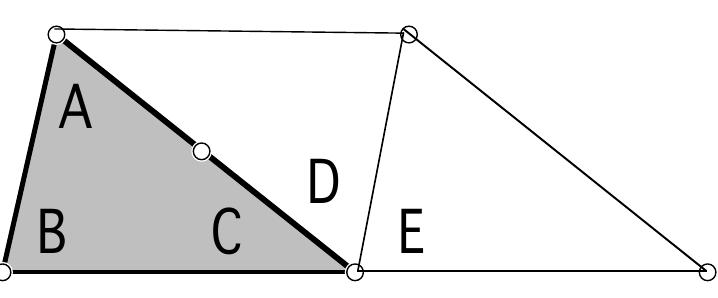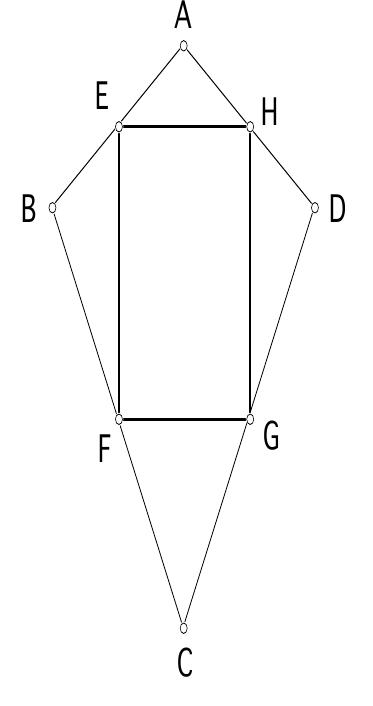Some Reflections on the Van Hiele theory
Abstract
This paper gives a review of research on the Van Hiele Theory over the past 30 years, and highlights some important issues regarding theoretical implications for designing learning activities in dynamic geometry contexts, as well as issues of further research such as hierarchical class inclusion. Links to a recorded video of this talk is also given.
FAQs
AI
What are the implications of the Van Hiele theory for geometry education?
The Van Hiele theory suggests that students must progress through distinct thought levels sequentially, which implies a need for specific instructional strategies tailored to each level. For instance, only 10-15% of pupils were at Level 2 by Grade 5 in Russian studies, indicating lower geometry proficiency due to earlier curriculum gaps.
How does the Russian geometry curriculum relate to the Van Hiele theory?
The traditional Russian geometry curriculum's two-phase approach aligns with the Van Hiele levels, beginning with intuitive learning and progressing to formal deductive reasoning. Research showed that only 10-15% of students reached Level 2 before entering complex Level 3 tasks.
What does the evidence suggest about students' transitions between Van Hiele levels?
Studies indicate that progression from Level 1 to Level 2 involves significant restructuring of relationships between geometric concepts, not merely verbalization of knowledge. For example, only 45% of South African pupils in Grade 12 achieved Level 3 proficiency despite the curriculum's expectations.
What are the characteristics of thought levels in the Van Hiele theory?
Each of the first four levels in the Van Hiele theory exhibits distinct characteristics; for example, Level 2 students analyze properties yet fail to interrelate them, leading to misconceptions about class inclusions. In contrast, students at Level 3 demonstrate hierarchical thinking, understanding broader concepts through logical deduction.
How does terminology impact students' understanding in the Van Hiele framework?
The Van Hiele theory emphasizes that acquisition of technical terminology is critical for progressing from Level 1 to Level 2 in geometry education; insufficient understanding can hinder concept transitions. This was evident in findings where transition challenges were magnified for second-language learners due to technical language demands.
References (47)
- Atebe, H.U. & Schäfer, M. (2008). "As soon as the four sides are all equal, then the angles must be 90°". Children's misconceptions in geometry. African Journal of Research in Science, Mathematics & Technology Education, 12(2), 47-66.
- Bruner, J.S. (1966). Towards a Theory of Instruction. New York: Norton.
- Burger, W.F. & Shaughnessy, J.M. (1986). Characterizing the Van Hiele levels of development in geometry. Journal for Research in Mathematics Education, 17(1), 31-48.
- Casa, T.M. & Gavin, M.K. (2009). Advancing Elementary School Students' understanding of quadrilaterals. In Craine, T. & Rubenstein, R. (2009). Understanding Geometry for a Changing World. 71 st Yearbook, Reston, VA: NCTM, pp. 205-219.
- Craine, T.V. & Rubenstein, R.N. (1993). A Quadrilateral Hierarchy to Facilitate Learning in Geometry. Mathematics Teacher 86 (January), 30-36.
- De Villiers, M.D. (1986). Boolean Algebra at school. University of Stellenbosch: RUMEUS. (Republished & now available for purchase as PDF download or in printed book form at http://www.lulu.com/product/paperback/boolean-algebra-at- school-vol-1/14244188 ).
- De Villiers, M.D. & Njisane (1987). The Development of Geometric Thinking among Black High School Pupils in KwaZulu (R.S.A.), Proceedings of the Eleventh PME-conference, Montreal: Vol.3, pp.117-123, July 1987.
- Invited plenary presented at the 4 th Congress of teachers of mathematics of the Croatian Mathematical Society, Zagreb, 30 June -2 July 2010, as well as at the National Mathematics Congress in Namibia, Swakopmund, 21-23 May 2012. Also presented as public lecture in the Program Post-Graduate Studies in Mathematics Education, Pontifical Catholic University of São Paulo, Brazil. 19 April 2010.
- De Villiers, M.D. (1987). Research evidence on hierarchical thinking, teaching strategies and the Van Hiele Theory: Some critical comments. University of Stellenbosch: RUMEUS. (Available from: http://math.kennesaw.edu/~mdevilli/VanHieleCritique-87.pdf )
- De Villiers, M.D. (1991). Pupils' needs for conviction and explanation within the context of geometry. Pythagoras, 26, 18-27. (Available from: http://mzone.mweb.co.za/residents/profmd/needs.pdf )
- De Villiers, M.D. (1994). The role and function of a hierarchical classification of the quadrilaterals. For the Learning of Mathematics, 14(1), 11-18. (Available from http://mzone.mweb.co.za/residents/profmd/classify.pdf )
- De Villiers, M.D. (1998). To teach definitions or teach to define? In Olivier, A. & Newstead, K. (Eds). Proceedings of PME 22, Vol 2, 248-255. (Available from http://mzone.mweb.co.za/residents/profmd/define.htm )
- De Villiers, M.D. (2003). Rethinking Proof with Sketchpad 4. Key Curriculum Press, USA.
- De Villiers, M. (2004). Using dynamic geometry to expand mathematics teachers' understanding of proof. The International Journal of Mathematical Education in Science & Technology, 35(5), 703-724. (Available from http://mysite.mweb.co.za/residents/profmd/vanhiele.pdf )
- De Villiers, M. (2009). Some Adventures in Euclidean Geometry. Lulu Publishers. (Available for purchase as PDF from: http://www.lulu.com/content/7622884
- De Villiers, M.; Govender, R. & Patterson, N. (2009). Defining in Geometry. In Craine, T. & Rubenstein, R. (2009). Understanding Geometry for a Changing World. 71 st Yearbook, Reston, VA: NCTM, pp. 189-203.
- Feza, N. & Webb. P. (2005). Assessment standards, Van Hiele levels, and grade seven learners' understandings of geometry. Pythagoras, 62 (December), 36-47.
- Freudenthal, H. (1973). Mathematics as an educational task. Dordrecht: Reidel.
- Fuys, D., Geddes, D. & Tischler, R. (1988). The Van Hiele Model of Thinking in Geometry among Adolescents. JRME Monograph No. 3, NCTM.
- Govender, M. (1995). Pupils' proof-writing achievement in circle geometry. Unpublished B.Ed. dissertation, University of Durban-Westville.
- Invited plenary presented at the 4 th Congress of teachers of mathematics of the Croatian Mathematical Society, Zagreb, 30 June -2 July 2010, as well as at the National Mathematics Congress in Namibia, Swakopmund, 21-23 May 2012. Also presented as public lecture in the Program Post-Graduate Studies in Mathematics Education, Pontifical Catholic University of São Paulo, Brazil. 19 April 2010.
- Govender, R. & De Villiers, M. (2003). Constructive Evaluation of Definitions in a Dynamic Geometry Context. (2003). Journal of the Korea Society of Mathematical Education, 7(1), March, 41-58. (Available online at http://mathnet.kaist.ac.kr/mathnet/kms_tex/980829.pdf ).
- Gutierrez, A., Pegg, J. & Lawrie, C. (2004). Characterization of students' reasoning and proving abilities in 3-dimensional geometry. Proceedings of the 28 th PME Conference, Vol. 2, pp. 511-518.
- Hoffer, Alan. (1981). Geometry is More Than Proof. Mathematics Teacher, 74 (January): 11-18.
- Idris, N. (2009). The impact of using Geometer's Sketchpad on Malaysian students' achievement and Van Hiele geometric thinking. Journal of Mathematics Education, Dec, Vol. 2, No. 2, pp. 94-107.
- Isoda, M. (1996). The development of the language of function: An application of Van Hiele's levels. In Puig, L. & Gutierrez, A. Proceedings of PME 20, Vol. 3, 105- 112.
- Land, J.E. (1990). Appropriateness of the Van Hiele model for describing students' cognitive processes on algebra tasks as typified by college students' learning. Ann Arbor, Mi. UMI Dissertation Services.
- Mayberry, J.W. (1981). An Investigation of the Van Hiele levels of Geometric Thought in Undergraduate Preservice Teachers. Unpublished doctoral dissertation, Univ. of Georgia, Athens.
- Malan, F.R.P. (1986). Onderrigstrategieë vir die oorgang van partisie denke na hierargiese denke in die klassifikasie van vierhoeke: enkele gevallestudies. [Teaching strategies for the transition of partition thinking to hierarchical thinking in the classification of quadrilaterals.] (Internal report no. 3). Stellenbosch: University of Stellenbosch, Research Unit of Mathematics Education (RUMEUS).
- Mudaly, V. & De Villiers, M. (2000). Learners' needs for conviction and explanation within the context of dynamic geometry. Pythagoras, 52 (August). 20-23. (Available from http://mzone.mweb.co.za/residents/profmd/vim.pdf )
- Invited plenary presented at the 4 th Congress of teachers of mathematics of the Croatian Mathematical Society, Zagreb, 30 June -2 July 2010, as well as at the National Mathematics Congress in Namibia, Swakopmund, 21-23 May 2012. Also presented as public lecture in the Program Post-Graduate Studies in Mathematics Education, Pontifical Catholic University of São Paulo, Brazil. 19 April 2010.
- Nixon, E.G. (2002). An investigation of the influence of visualization, exploring patterns and generalization on thinking levels in the formation of concepts of sequences and series. Unpublished Masters thesis. Pretoria: UNISA.
- Nixon, E.G. (2005). Creating and learning abstract algebra: Historical phases and conceptual levels. Unpublished DPhil Dissertation. Pretoria: UNISA.
- Nohda, N. (1992). Geometry teaching in Japanese school mathematics. Pythagoras, 28, April, 18-25.
- Pegg, J., & Davey, G. (1989). Clarifying level descriptors for children's understanding of some basic 2-D geometric shapes. Mathematics Education Research Journal 1 (1): 16-27.
- Sáenz-Ludlow, A. & Athanasopoulou, A. 2007. Investigating properties of isosceles trapezoids with the GSP: The case of a pre-service teacher. In Pugalee, D;
- Rogerson, A & Schinck, A, (Editors). Proceedings of the 9 th International Conference: Mathematics Education in a Global Community, University of North-Carolina, September 7-12, 2007, pp. 577-582. (Available from: http://math.unipa.it/~grim/21_project/21_charlotte_SaenzLudlow- AthanasopoulouPaperEdit.pdf )
- Smith, E. & De Villiers, M. (1989). A comparative study of two Van Hiele testing instruments. Poster presented at the 13 th International Conference of PME, Paris. (Available from: http://math.kennesaw.edu/~mdevilli/VanHiele-test-comparison.pdf )
- Smith, R. R. (1940). Three major difficulties in the learning of demonstrative geometry. The Mathematics Teacher, 33, 99-134, 150-178.
- The Mathematical Association of South Africa. (1978). South African Mathematics Project: Syllabus Proposals. Pretoria: MASA. (Now Wits: AMESA).
- University of Stellenbosch. (1984). Levels of thinking in geometry: Tests 1 & 2. Unit for Research in mathematics Education, Researchers: P.G. Human & M.D. de Villiers. (Respectively available at: http://www.scribd.com/Geometry-Levels-of-Thinking-Test-1-1984/d/30882207 http://www.scribd.com/doc/30882101/Geometry-Levels-of-Thinking-Test-2-1984
- Invited plenary presented at the 4 th Congress of teachers of mathematics of the Croatian Mathematical Society, Zagreb, 30 June -2 July 2010, as well as at the National Mathematics Congress in Namibia, Swakopmund, 21-23 May 2012. Also presented as public lecture in the Program Post-Graduate Studies in Mathematics Education, Pontifical Catholic University of São Paulo, Brazil. 19 April 2010.
- Usiskin, Z. (1982). Van Hiele levels and Achievement in Secondary School Geometry. Final report of the CDASSG Project. Chicago: Univ. of Chicago.
- Van Hiele, P.M. (1973). Begrip & Inzicht. Muusses: Van Putten, S. (2008). Levels of Thought in Geometry of Pre-service Mathematics Educators according to the van Hiele Model. Unpublished Master's thesis, University of Pretoria. (Retrieved 26 May 2010 from: http://upetd.up.ac.za/thesis/available/etd-05202008-130804/unrestricted/dissertation.pdf )
- Wood, D., Bruner, J.S., & Ross, G. (1976). The role of tutoring in problem solving. Journal of Psychology and Psychiatry. 17.
- Wirszup, I. (1976). Breakthroughs in the Psychology of Learning and Teaching Geometry. In J.L. Martin (Ed.). Space and Geometry. Columbus, Ohio: Eric Centre.
- Wu, D. & Ma, H. (2006). The distribution of Van Hiele levels of geometric thinking among 1 st through 6 th graders. In Novotna, J. et al, Proceedings of PME 30, Vol 5, pp. 409-416. Prague: PME.








